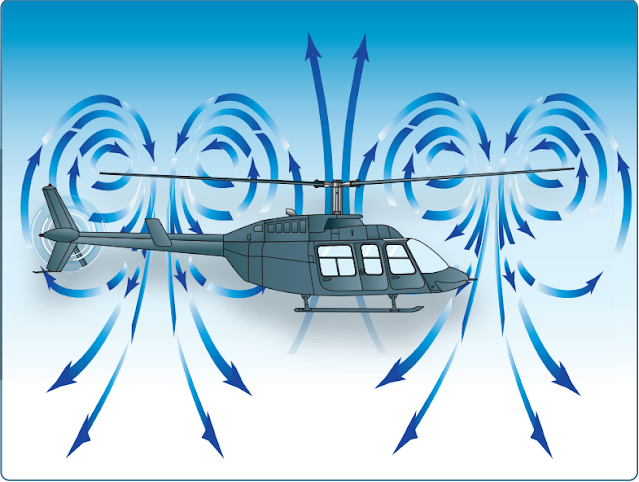Do helicopters have a higher risk of accidents than other planes?
Yes, helicopters generally have a higher risk of accidents compared to other types of fixed-wing aircraft. While it's essential to consider that accident rates can vary depending on specific factors such as the type of operation, maintenance practices, and pilot experience, helicopters tend to have a higher accident rate per hours flown when compared to airplanes. Several factors contribute to this higher risk:
Flight dynamics: Helicopters have different flight dynamics than fixed-wing aircraft. Their ability to hover, take off vertically, and fly at low speeds introduces additional complexities. Helicopters are more susceptible to environmental factors such as wind, turbulence, and ground effects, which can increase the risk of accidents, especially during critical phases of flight like takeoff and landing.

Vortex ring state, in which airflow is upward on the inner blade section, producing a secondary vortex in addition to the normal wingtip vortices. Turbulent airflow results in loss of rotor efficiency. If allowed to continue, uncommanded pitch-and-roll oscillations may occur, with a large descent rate.
Source: wikipediaVertical descent: In the event of an engine failure, helicopters have limited options for gliding or making an emergency landing compared to airplanes. They typically rely on autorotation, a technique that allows the main rotor to continue spinning and provide lift during descent. Autorotation requires precise piloting skills and prompt execution to achieve a controlled landing. If mishandled, it can lead to accidents.

Helicopters can autorotate back to earth in case of emergency. The FAA recommends a flight profile similar to the following procedure Low-altitude operations: Helicopters often operate at lower altitudes, particularly during tasks such as aerial work, search and rescue missions, and emergency medical services. Flying closer to obstacles, power lines, and difficult terrain increases the risk of collisions and accidents. Low-altitude operations also pose challenges such as limited visibility and the need for increased situational awareness.

Helicopter using treetops as cover Operational demands: Helicopters are involved in a wide range of demanding operations, including military missions, law enforcement, and off-shore operations. These tasks often require pilots to operate in challenging environments, adverse weather conditions, and high-stress situations. The increased operational demands can contribute to accidents if not managed effectively.

Helicopter Logistics on Oil and Gas Offshore Operations
Pilot workload and human error: Helicopter pilots have a higher workload compared to their fixed-wing counterparts. They must control multiple systems, constantly monitor instruments, navigate, and make split-second decisions. The demanding nature of helicopter operations can increase the likelihood of human error, which is a significant contributing factor to accidents.

Footage from CBS Philly shows the helicopter near the church.
Source: cbsnews.com
It's worth noting that advancements in technology, improved training programs, enhanced maintenance practices, and stricter safety regulations have led to significant improvements in helicopter safety over the years. The aviation industry continues to focus on reducing the risks associated with helicopter operations and enhancing safety measures.



.jpg)




.jpg)


Post a Comment